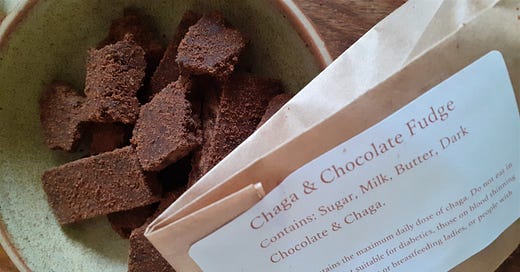Cornwall is rightly famous for its fudge.
Walk through any Cornish village in the Summer, and you’ll pass pretty store windows piled high with tempting displays of this family favourite. From banoffee pie to cherry bakewell, each vendor touts the heritage of their “famous” recipe, (most of which have a large dollop of Cornish clotted cream thrown in for good measure.)
Although popular in South West England, fudge is believed to have originated in 19th century Baltimore. During this time, recipes for fudge were frequently printed in newspapers, and became a popular sweet treat for ordinary people who were able to make it in their homes without the need for any specialized equipment.
The word fudge is said to have originated in the 17th century, and is derived from the verb fadge which means "to fit together in a clumsy manner". According to Wikipedia, during this period, fudge was also used as an exclamation by sailors as a derisory retort to nonsense or untruths.
With Easter on the horizon, I thought it might be fun to create a herbal version of this classic. As luck would have it, I happened across a recipe for herbal fudge in Michael Moore’s “Herb Formulas For Clinic & Home."
Made with a potent dose of guarana and cacao, this version (jovially referred to as “speed fudge”) was a rather more stimulating recipe than I’d had in mind as a gift for friends and family. However, as the base recipe itself looked delicious, I decided to give it a whirl and replace the stronger ingredients with a milder, adaptogenic blend of chaga and chocolate.
I deliberately used a low dosage on the off chance someone was tempted to eat the whole batch in one sitting (and also because I only had a small amount of chaga powder left in the dispensary.) Surprisingly, I got some rather pleasing feedback.
As one friend said:
“No joke. Since I’ve been having a couple of nibbles each day, I’ve felt remarkably good. Sort of mellow and calm. I think that chaga might be my thing!”
The following article details my process, and includes advice about tailoring the dosage of herbal constituents for edibles. I hope you’ll enjoy the recipe and have a go at making a batch for yourself.
Keep reading with a 7-day free trial
Subscribe to The Herbalist's Diary to keep reading this post and get 7 days of free access to the full post archives.






